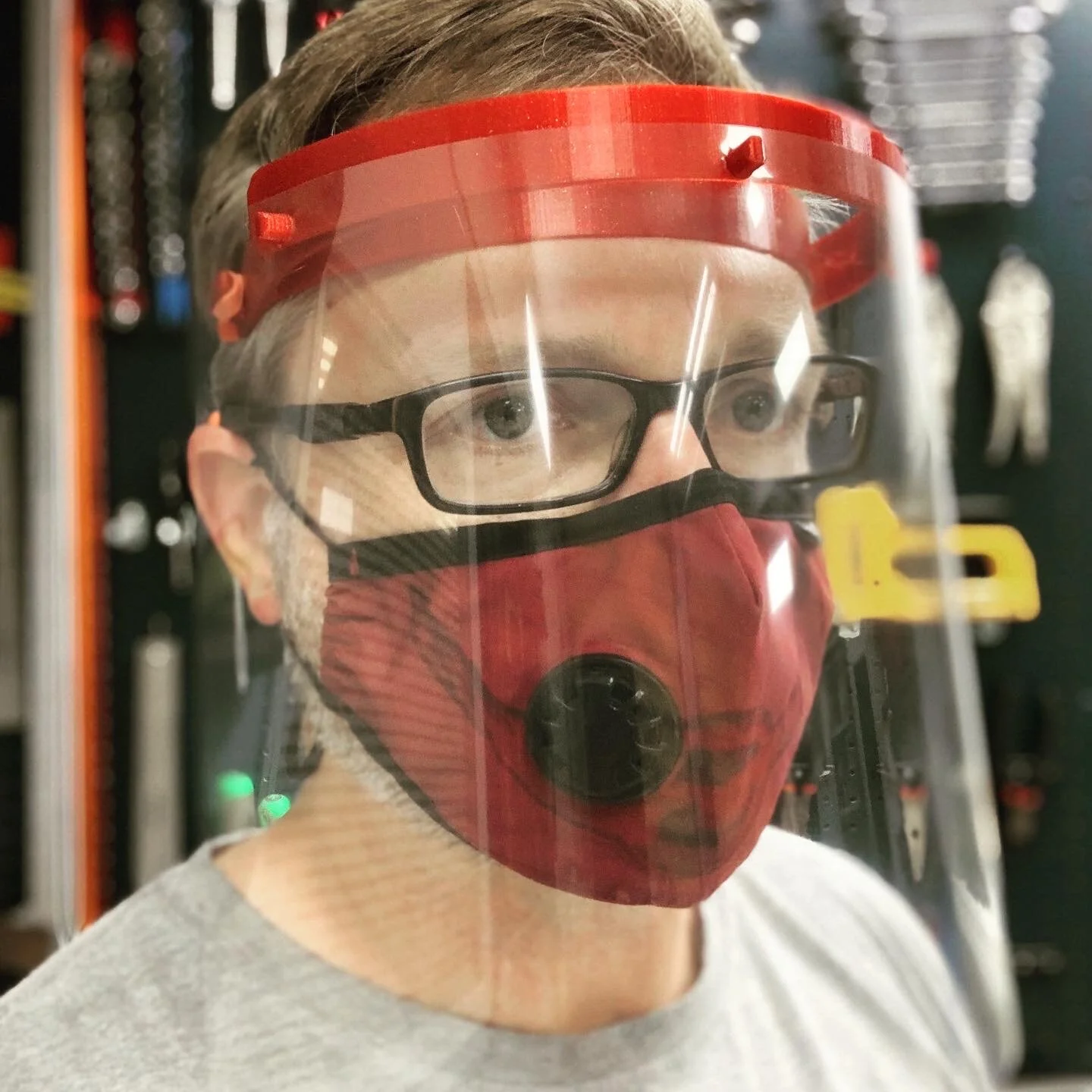|
|
Help for the Helpers
The novel coronavirus pandemic has impacted everyone in our nation — but no one has been impacted more than our front-line medical professionals. These selfless professionals put themselves (and by extension, their families) at risk to take care of all of us.
Bolts & Bytes Maker Academy is helping to support our valiant local medical community by making medical face shields to help protect workers from infection. Our programs might be on hold, but we have our 3D printers, laser cutter and vinyl cutters running full bore!
YOU can help, too!
Your donation helps us make more!
We are giving our finished face shields away to any front-line medical personnel that need them. You can help us fill that need and make more face shields by using the button below to make a donation. Funds go only toward this coronavirus protection program and any extra funding will be donated to a local group in need.
Make your own face shields!
If you have a 3D printer and/or a vinyl cutter, you can help make face shields for our local medical community. See below for resources, instructions and groups who are accepting donations.
IMPORTANT : If you do decide to make equipment for our first responders, please make sure to protect your gear from possible contamination! At Bolts & Bytes, we have turned one of our workspaces into a clean-room. Anyone entering must be in protective gear, including face masks and gloves, and all work is done in this space, including assembly and packaging.
3D Printed Face Shield
We are using a face shield design adapted from an exceptional design made by Prusa, a renowned 3D printer manufacturer. This 3D printed design was developed with the Czech Ministry of Health and has been evaluated by local medical professionals, including trauma and emergency department personnel.
We are printing these in PET-G plastic, which is tough, flexible and can be sanitized with alcohol and harsh chemicals. The screen can be made of any clear, flexible material — we are using 8.5”x11” presentation transparencies and clear report covers. To connect the clear shield to the frame, you simply use a standard 3-hole punch on the shield and snap it in place. It was important to us to choose a design where medical staff could quickly and easily replace the clear shield using materials that are readily available.
>> 3D Print Files & Instructions Available Here
Materials:
3D Printer with a heated bed
PET-G filament
8.5”x11” clear material. We are using 10mil clear report covers, but any clear material will do (I’ve even seen people use cut up 2L soda bottles!). Look for material 10mil - 7mil in thickness. We have also used overhead transparencies.
Elastic or rubber bands. We are using 7” rubber bands that we cut and secure on each end with zip ties.
Foam strip. Your recipients will thank you for this touch after wearing a face shield for an entire shift. We are using 7” strips of 3/4” wide foam weather stripping for windows and doors. It comes with adhesive on one side, so it can easily be cut and pressed into place. Look for closed-cell foam or sponge material.
Zip ties. Used for securing the ends of the rubber band head strap. We are using thin 4” zip ties.
Vinyl-Cut or Laser-Cut Face Shield
This design comes from New York University and is simple and easy to produce in quantity using a vinyl cutter or laser cutter. It is not as robust as the 3D printed design above and the clear screens are not replaceable, but it is effective and easier to produce.
>> Cutting Files & Instructions Available Here
Materials:
Vinyl cutter or laser cutter
11”x17” clear material. We are using 10mil clear report covers, but any clear material will do Ideally, look for material that is 10-12mil thick, but nothing thinner than 7mil.
Elastic or rubber bands. We are using 7” rubber bands that we cut and secure on each end with zip ties.
Foam strip. Your recipients will thank you for this touch after wearing a face shield for an entire shift. We are using 7” strips of 3/4” wide foam weather stripping for windows and doors. It comes with adhesive on one side, so it can easily be cut and pressed into place. Look for closed-cell foam or sponge material.
Zip ties. Used to connect one side of the strap to the shield - it really helps with stability. We are using thin 4” zip ties.
Donating Medical Equipment
We’ve listed local medical organizations that are accepting donations. If you know of anyone else, please let us know so we can update this list!
Baptist Health & Wolfson Children’s Hospital
Covid-19 Donations Website
contact Laura Collins at laura.collins@bmcjax.comUF Health
contact Christopher Mele at Christopher.Mele@jax.ufl.eduNemours Children's Hospital
contact Brittany Fowler at Brittany.fowler@nemours.orgSulzbacher Center
contact Eileen Briggs at eileenbriggs@sulzbacherjax.orgMemorial Hospital & Orange Park Medical Center
contact Renee Finley at Renee.Finley@HCAhealthcare.com





